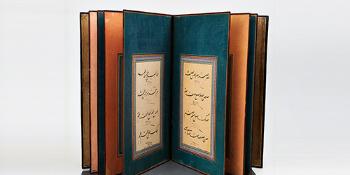Five Hundred Year of Islamic Calligraphy - Masterpieces from Sakıp Sabancı Museum
- Category
- Exhibition
- Country
- Turkey
- Date
- 19 January - 13 April 2014, 8:00am - 8:00 pm
- Venue
- Bahrain National Museum
- Tickets
- Free Admission
The founder of Sakıp Sabancı Museum, which is attached to Sabancı University, was the late Sakıp Sabancı, one of Turkey's leading businessmen. In the 1970s he began to collect paintings by Turkey's leading artists and foreign painters who worked for the Ottoman sultans, as well as illuminated manuscripts and calligraphy. Since 1989 the collection has been exhibited in major European and American museums. In 2002 Sakıp Sabancı donated his historical mansion in Emirgan—a district on the Bosphorus in Istanbul—where he had lived with his family for many years to Sabancı University to use as a museum.
Today Sakıp Sabancı’s collection of rare books and calligraphy is exhibited at the Sakıp Sabancı Museum (SSM). This is the only museum in Istanbul and Turkey with a permanent exhibition of illuminated manuscripts and calligraphy. Among the private collections in Istanbul, SSM has the finest collection of Turkish-Islamic arts of the book. It is said that "The Koran was revealed in the Hejaz, read in Cairo and written in Istanbul", and the truth of this saying is confirmed by the exquisite manuscript Korans and prayer books produced in the Ottoman capital. Selected examples of illuminated Korans and prayer books dating from the 16th to early 20th centuries, with calligraphy by Istanbul artists, some of whom served as calligraphy teacher to the sultans, large calligraphic panels, again by Istanbul artists, that were hung on walls like paintings, and albums of calligraphic compositions will be included in the planned exhibition in Bahrein. SSM also has a collection of outstanding examples of Turkish painting. Examples of those depicting the arts of the book and calligraphy and landscapes in oil showing Istanbul and its environs by painters who lived in Istanbul in the 19th and 20th centuries have also been selected to show in the exhibition.









